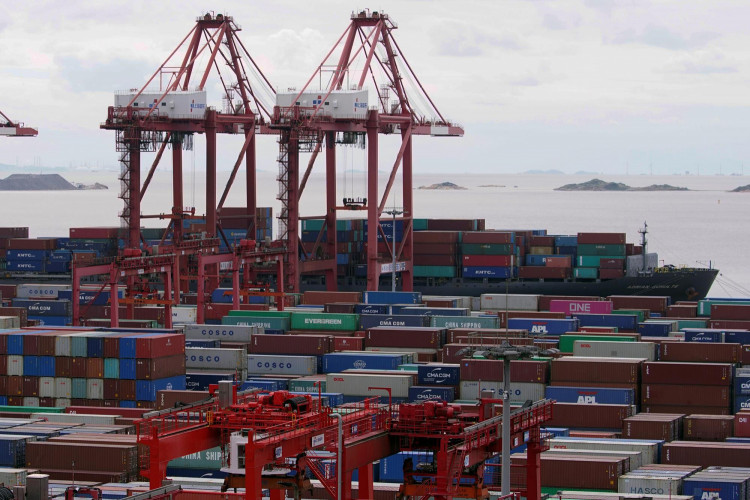The world's largest container ship owner and global trade "barometer", Maersk, has warned that the contraction in global trade is lasting longer and is more severe than anticipated, with demand in Europe and America on a downtrend, indicating potential challenges ahead.
Last Friday, Maersk released its Q2 financial report showing a 40% year-on-year drop in revenue to $13 billion. Notably, its sea freight business experienced a decline in revenue by as much as 50%.
During an interview with Bloomberg, Maersk CEO Vincent Clerc conveyed that the container transport industry is undergoing its most significant adjustment period post the COVID-19 surges of 2021 and 2022. He suggested that the global trade contraction might last longer than initially predicted, noting that inventory adjustments that began in Q4 of 2022 seem to be extending and are now expected to last till the end of the year. Given these continued inventory reductions, Maersk projects a growth range for global container throughput between -4% and -1%, adjusting from an earlier forecast of -2.5% to +0.5%. Sea freight is anticipated to grow in line with market trends.
Bloomberg's analysis underscored that while Maersk's Q2 performance was relatively stable, the prospects of extended inventory adjustments, economic downturn risks, and softer freight volume expectations cast a shadow over its future performance. This might affect the company's financial health in the upcoming months. Decreased freight charges combined with the delivery of new ships and a reduction in disposable income might deteriorate financial metrics in the latter half of the year and into 2024.
It's worth noting that the container shipping industry relies heavily on global demand trends. During the COVID-19 period of 2020-22, as retailers and other firms replenished their inventories to meet pent-up consumer demand, the industry experienced an unprecedented boom, marked by a scarcity of containers and continually rising freight prices.
However, since the beginning of 2022, container freight prices have significantly plummeted. Global central banks have adopted tighter monetary policies to suppress demand-driven inflation. While recent container freight prices have seen some uptick, it seems to be more an outcome of reduced shipping capacity than a sign of global economic recovery.






